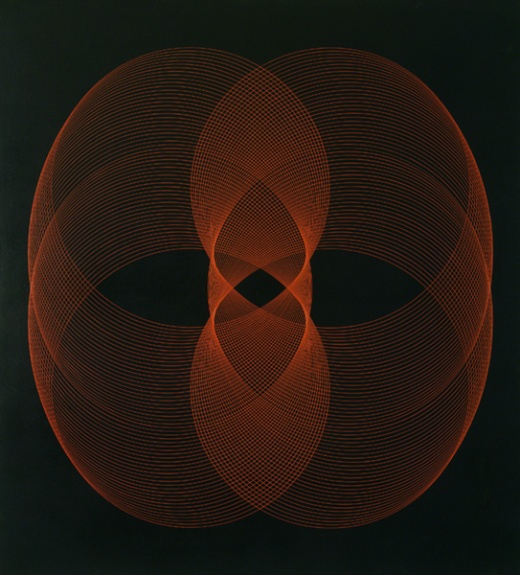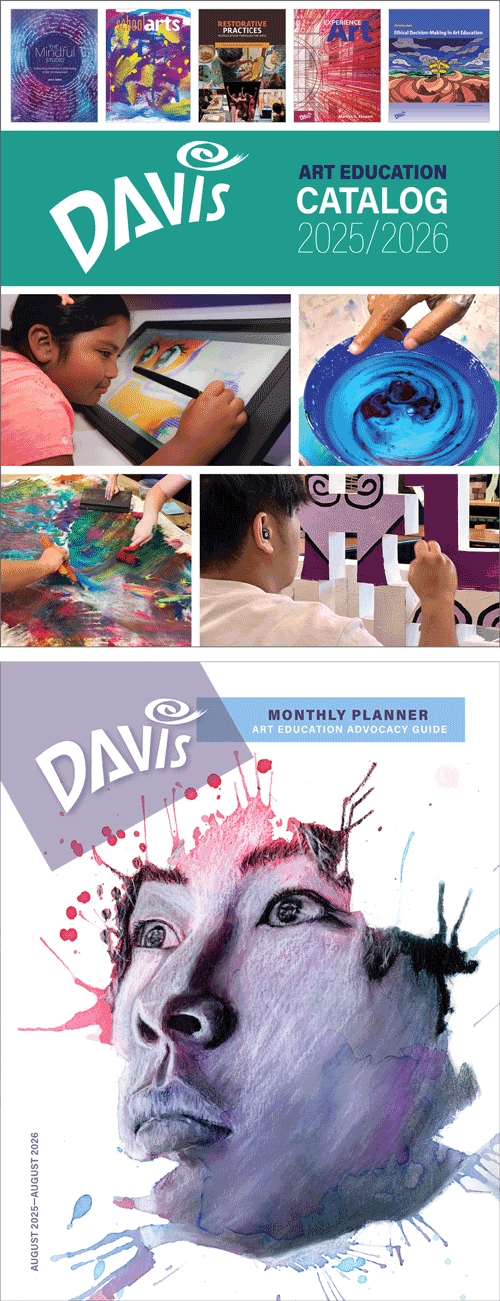Artist Birthday: Eduardo MacEntyre
The complex linear patterns in MacEntyre's Generative Paintings were reminiscent of the nautilus designs of Leonardo Fibonacci (1175–1250), an Italian mathematician, whose designs were based on mathematical logarithms and the newly discovered field of perspective. Because MacEntyre's precisely painted, grid-like structures were hand-painted, the artist received critical acclaim.
Artist birthday for February 20th: Eduardo MacEntyre (1929–2014, Argentina)
Eduardo MacEntyre was one of the pioneer modernists of South American art history.
 |
| Eduardo MacEntyre, Black, Red, Orange, 1965. Oil on canvas, 165 x 150 cm . © 2025 Artist or Estate of Artist. (MOMA-P2391) |
MacEntyre organized his units of curved lines in accordance with constraint laws and subjecting them to inventive variations characterized by impeccable technique, bright color and energy. His forms definitely suggest a solidity that could allow them to pierce perpendicular planes with their glowing signature.
In Argentina, between the time political liberties were increasing in the late 1910s, into the 1940s, most modernist art was influenced by European artists such as Expressionists, Surrealists, and Fantasy artists like Paul Klee (1879–1940).
After World War II (1939–1945), a growing number of Argentinian artists studied not only in Paris, but also in New York, where Abstract Expressionism was just taking off. The 1946 White Manifesto written by a number of Argentinian artists argued for the supremacy of non-objective abstraction. From that period on, Argentinian modernists participated in every avant-garde movement in Western art.
MacEntyre was born in Buenos Aires. His earliest interest was in drawing, which he pursued at the age of twenty. Major influences on his early work was classical standards such as Albrecht Durer (1471–1528), Hans Holbein the Younger (1497–1543), and Rembrandt (1606–1669). He explored Impressionistic and then Cubist art.
The mania for Concrete Art in Argentina of the 1940s led MacEntyre to explore a linear extension of the idea of pure abstraction. In 1959 he was co-founder of a manifesto that extolled the virtues of their "Generative Art," a linear extension of Concrete Art that explored the interaction of color and light. MacEntyre's theories relied on the use of random algorithms to achieve designs that caused optically perceived movement.
This image is in the following Davis program: Davis Collections: Latinx Art, Central and South America

Comments